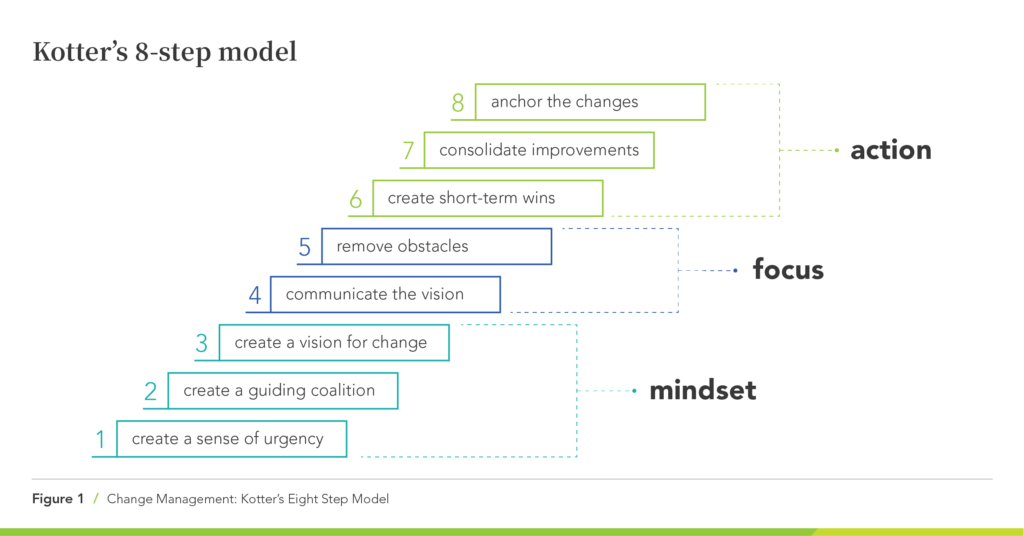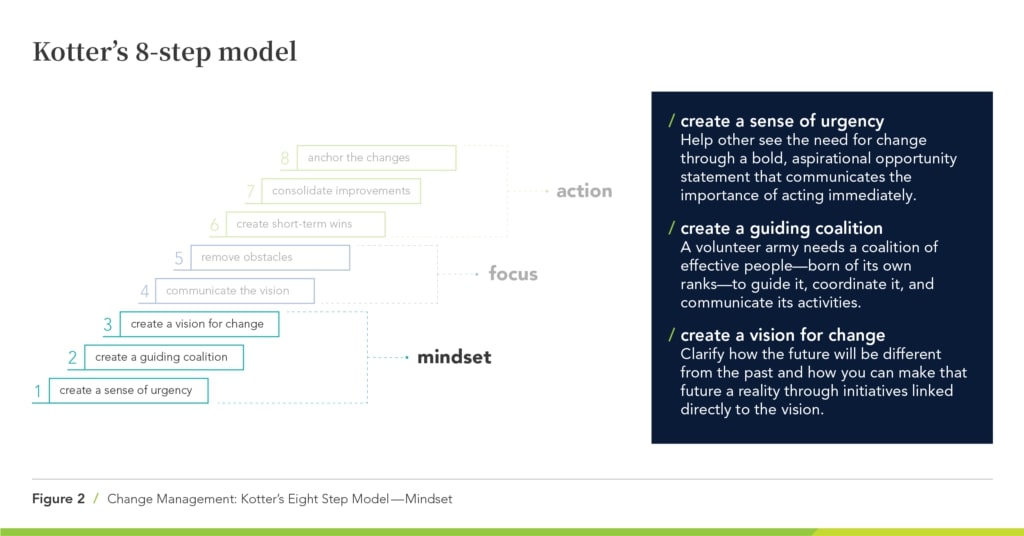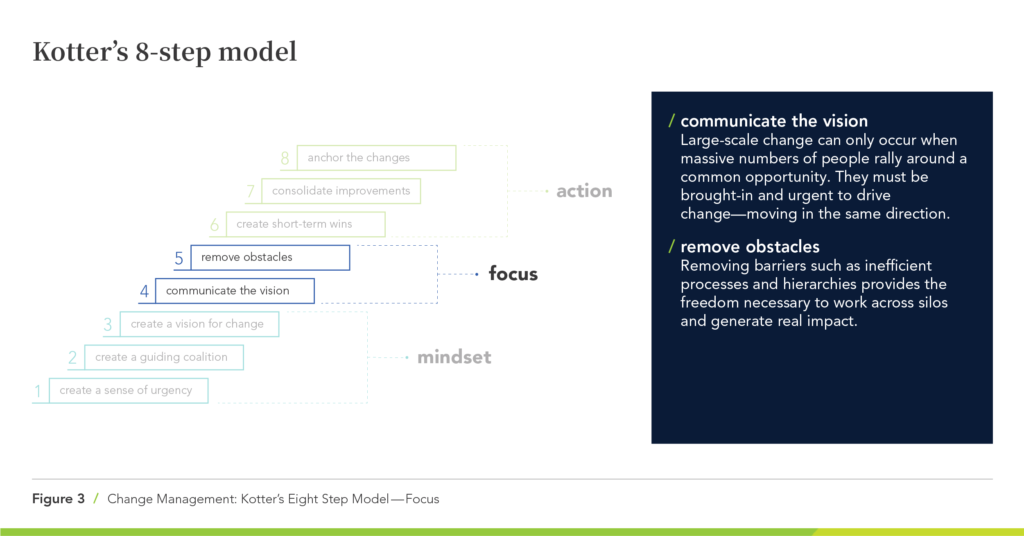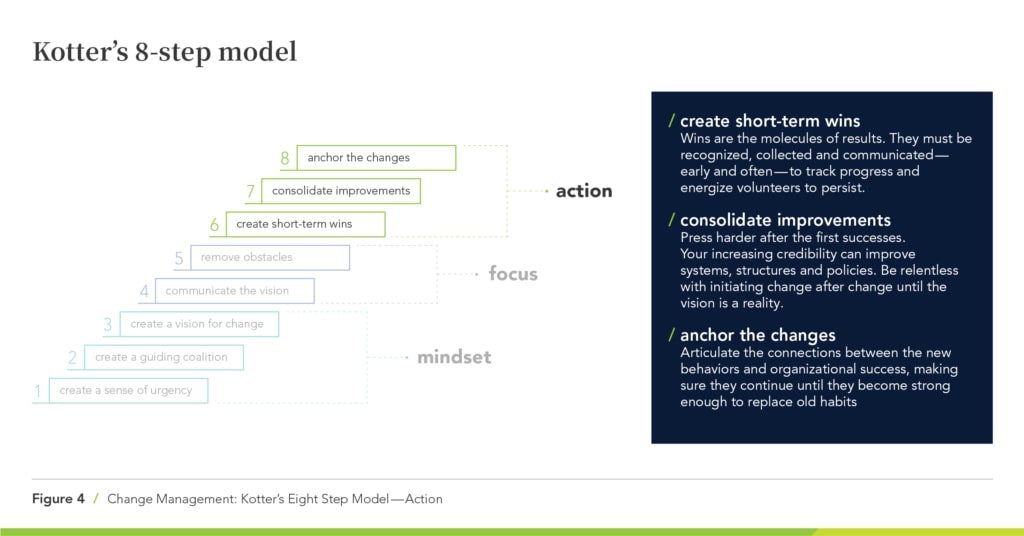Gone are the days when a siloed business could present an effective customer experience (CX). CX is a key differentiator today—according to many researchers, the key differentiator over product and people. As a marketer, your deep customer intimacy allows you to be a key driver of success in this area.
Consequently, improved CX creates shareholder value: emotionally connected customers spend significantly more than apathetic ones. So, it’s no surprise CEOs view CX as a key personal initiative. When polled, 70% of chief executives reported feeling a growing responsibility to represent the best interests of their customer, and 67% had a desire to focus on building trust with that audience.
Your success as a marketing leader is directly tied to your ability to create an incredible customer experience. And given your intimacy with your customer, no one else in the organization is better positioned to seize this opportunity. Don’t be the marketing leader who misses their chance to become a driver of business strategy.
When you find yourself facing a customer experience challenge, regardless of perceived importance, I encourage you to turn a deliberate eye towards change leadership. This is exactly what our partners at McGraw-Hill have done, and their approach has influenced millions of dollars in revenue. Before we get to their story, I want to introduce one of my favorite change management methodologies.
leading change
As an effective marketing leader, you have a vision of what success looks like for you and your business, and that vision includes, in large part, improving customer experience. Bringing that vision to life can often seem like running a gauntlet, even for the most effective marketing leaders. In fact, research from Harvard Business School tells us there’s only a 30% chance of achieving successful organizational change. So how can you maximize your likelihood of success?
In a perspective titled lead like a marketer, think like a CEO, I urge growth-minded marketing leaders to serve as an agent for change to move their organizations forward. Being an agent for change will allow you to create immense value for both your customers and business as a marketing leader, but what does it really mean to be one?
Being an agent of change consists of three components: mindset, focus, and action.
- Mindset
One of my favorite quotes is most often attributed to the management guru Peter Drucker: the best way to predict your future is to create it. Being an agent of change means accepting the fact that no one else in your organization has a better opportunity or stronger sense of responsibility to deliver an incredible, revenue-driving customer experience than you do. Be brave. Embrace the opportunity. Invite others to join the cause, and make it happen together. - Focus
You will find success at the intersection of your customers’ needs and your business’ needs. To be an agent of change, operate with a deep empathy for both sets of stakeholders, and actively manage the tension found at the intersection of your business’ strategic imperatives and your customer’s inherent motivations. - Action
Mental attitude and concentration won’t matter if you don’t get started. As an agent of change, have the courage to act. Embrace and drive organizational evolution. To help manage change, use a tool like Kotter’s change management framework. This approach provides a clear roadmap for change agents to follow.
If you’re familiar with John Kotter’s Leading Change, you’ll likely notice that mindset, focus, and action align with the Harvard Business School professor’s eight-step framework to help leaders enact change and increase its chances of success. As you seek to be an agent of change who acts, I recommend you get to know Kotter’s eight steps well:
bringing change leadership to life at McGraw-Hill
Our partner at McGraw-Hill, Director of Marketing Automation and Operations Hannah Thompson, uses her position as a customer advocate to deliver business value. In late 2017, Hannah realized the company’s siloed approach to the customer experience was confusing for the audience and likely negatively impacting business results.
“I had a realization in late 2017. Regardless of the channel each customer chooses to engage with our brand, they’re the same person with the same problem. It doesn’t matter if they’re submitting a web form managed by marketing, a live chat supported by Customer Service, or calling their rep directly. If it’s 10 p.m. on a weeknight, they’re submitting a web form to request support because it’s what’s most convenient for them.”
That said, Hannah found that the customer experience was vastly different depending on the channel they used to reach out. So, in February of 2018, she pulled together a coalition focused on customer experience. At the time, many in the organization wondered why marketing was taking such a strong stance on customer experience.
McGraw-Hill was evolving from a publishing and print business to a learning science organization, and Hannah’s colleagues around the company had never viewed marketing as more than the traditional concept: write copy, design ads, send emails, etc. Hannah decided she had to convince her peers that, “Marketing is a steward of the business that supports customers throughout their journey.”
“We are engaging, tracking, and measuring the customer and how they interact with our brand. A big part of the customer journey is what we call ‘right of opportunity’ or after the point of opportunity. The traditional [journey] view says marketing is responsible for left of opportunity and sales manages right of opportunity,” explained Hannah, but she knew that view of marketing was too narrow.
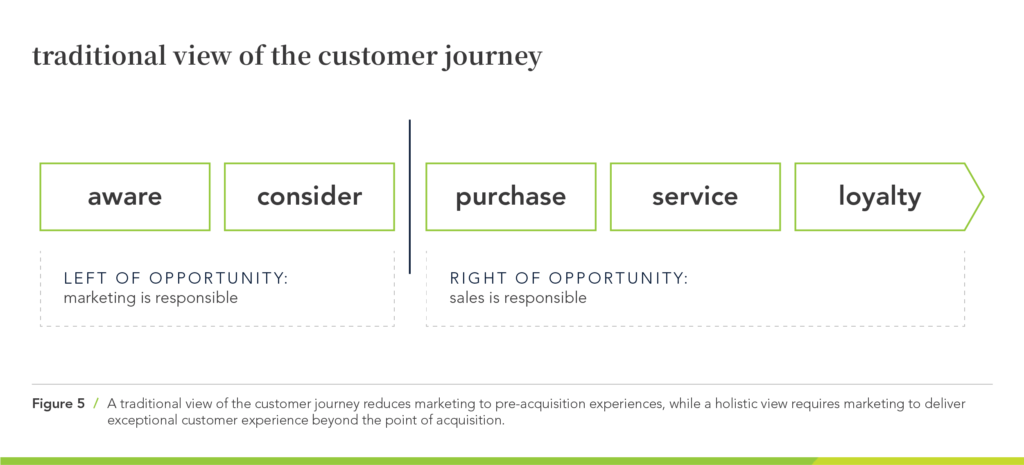
“Being a company with more than 130 years in the industry, we have partnered with many school districts who not only recognize but trust the McGraw-Hill name. The customer experience we create is the key to our success.”
Hannah began to help her colleagues understand the real value marketing could provide by seeking to better understand the problems they faced in the context of their common audience: the customer base. Her team built in-roads across functional areas – sales, customer support, product teams – and created conversation around the power of a seamless customer experience. Opportunities began to emerge.
“Our first step was to realize short-term wins and build momentum. We started by analyzing trends from the conversations these various teams were having with customers, and that led us to group comments by theme. By grouping the outreach into themes, we were able to introduce a ‘comments-based routing’ system which ensures each customer reaches the best internal team as quickly as possible based on the context of their message. Now, our customers are getting serviced quickly and with a human touch. We went from a 36-day average response time to now delivering a human touch in the first six to eight hours.”
moving from quick wins to sustained success
Hannah and the team at McGraw-Hill adopted a collaborative, customer-first mindset, focusing their attention on key challenges, and acting to make a difference for their customer. Business results have followed.
Just imagine the improvement in customer experience and, as a result, lifetime value—simply from cutting response time from 36 days to six hours. Hannah and the team were just getting started, and now they had the attention of their senior leadership team.
“Customer experience is at the center of everything,” started Hannah. “And our senior executives realized that organizational change has cross-functional implications. These projects often involved a need for funding, for instance, so it made sense for finance to be included.
“With our leaders involved, we are able to move much faster in driving change. We’ve met twice formally [in 2019] as a steering committee, and we have vetted and prioritized the projects of focus. Now, we are in the process of executing in our own areas and will come back together to check on the progress and set new targets.
“In May 2019, about a year after the original coalition met, my colleagues and I held a follow-up summit to see how far we had come and continue to build on the change that we implemented. One of the main reasons for that gathering was the head of the customer support, who’s a part of the steering committee, saw a challenge that we could solve quickly and acted as our advocate in the face of pushback. It’s been incredible to see our leaders rally around customer experience.”
Hannah’s story at McGraw-Hill shows the power of operating as an agent of change. She created urgency through stakeholder interviews and data gathering. A cross-functional coalition was created, and that coalition developed a shared vision. They achieved meaningful short-term wins that gained the attention of senior business leaders, and now they’re pressing forward faster with the support of the steering committee.
Given the attention customer experience has among CEOs and how connected marketing has always been to the customer, the marketing leader’s mandate today is simple: lead change to improve CX and drive business strategy.
More than business results or customer satisfaction, I’ve found leading projects with the scope of customer experience overhauls can be incredibly fulfilling personally and for the team involved. Following Kotter’s framework, especially steps four and six, will go a long way in delivering that fulfillment.
Have you had success with a customer experience initiative? Have you had difficulty gaining alignment? I often have conversations with marketing leaders like Hannah Thompson at McGraw-Hill about customer experience and change leadership. If you want to bounce ideas off someone or share specific stories about Kotter’s eight steps in action, please reach out.
Hannah and I recently had the opportunity to sit down and talk about the work we do to improve their customers’ experience. If you want to learn more about our partnership and the challenges we solve together, watch this quick video:
resources
KPMG: Tomorrow’s Experience, Today
PwC: Future of CX
The Value of Emotional Connection
Customer Experience Statistics

